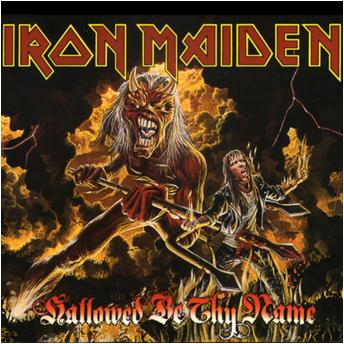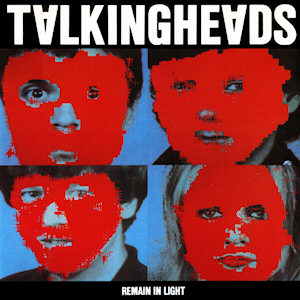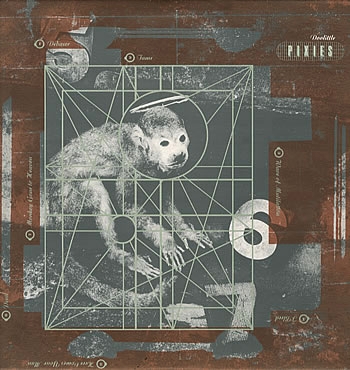

20.
N.W.A
”Fuck Tha Police”
[Ruthless / Priority / EMI; 1988]
“Fuck Tha Police” has been an anti-government anthem since it was released in 1988. It has been used in protests, banned from radio stations and referenced in various pop culture outlets. Although it wasn’t released as a single, it’s one of the most famous tracks by N.W.A.
The song focuses on the animosity between black youths and the Los Angeles Police Department that the members of N.W.A. experienced. Lyrics like “Without a gun and a badge, what do ya got?/ A sucka in a uniform waitin’ to get shot” portray violence towards police officers. The group even went so far to say that black police officers betrayed their race through the lyrics “Cuz they slam ya down to the street top/ Black police showin’ out for the white cop.”
Ruthless Records, the record label that released N.W.A.’s music, received letters from the FBI and the Secret Service that voiced their disapproval of the song. I can’t think of a song that’s more controversial than “Fuck Tha Police,” let alone one that conveys such a powerful message.
– Nicholas Preciado

19.
My Bloody Valentine
“You Made Me Realise”
[Creation; 1988]
“You Made Me Realise” is the world’s loudest song. No lie. And although the track’s climactic wall of sound (AKA the “holocaust section”) only lasts a minute or so on record, the band has been known to drag it out for over half-an-hour live while reaching volumes of up to 130 dB (yeah, that could have been the site’s name back in 2008 if the domain wasn’t taken).
But given the angst and subject matter of the song, the cacophonous “holocaust section” makes complete sense. Vocalists Kevin Shields and Bilinda Butcher harmonize (somewhat inappropriately) with treacherous lyrics about death and suicide (possibly enacting a poisonous relationship).
And although the songwriting is quite fantastic and laden with dark and hopeless lyrics, loud is the only way this track works: encapsulating raw emotion, having drummer Cíosóig slam on his drum kit, and having the three other members just breakdown and hold chords for as long as they can bear while sonically crushing their listeners. What a better way to end a show that to ensure that your audience can’t listen to anything until you return to town again?
– Evan Kaloudis

18.
Mission of Burma
“That’s When I Reach For My Revolver”
[Ace of Hearts; 1981]
Everyone likes the story of a rebel or an outlaw. Usually we get them in long drawn out movies where the main character’s actions will eventually win him the girl or acceptance or whatever, but on Mission of Burma’s “That’s When I Reach For My Revolver” we get that tale of rebellion and downright badassery compressed into less than four minutes of visceral rock and roll.
The guitars and drums backing Clint Conley (his name is even badass) seem to mirror his mood, as he talks about his tedious, frustrating and unsatisfying life the band lies in wait, gradually building before exploding into the chorus, and we can imagine this mirroring Conley’s heartbeat as he lunges for his weapon, deciding to finally make an impact in life by blowing everyone and everything away. There are adrenaline rushes in music and then there’s “That’s When I Reach For My Revolver,” which feels like a shot of pure energy delivered straight into your jugular, even thirty years on.
– Rob Hakimian

17.
Beastie Boys
“Paul Revere”
[Def Jam / Columbia; 1986]
After a few blocks of running and quite a bit of confusion, Joseph Simmons, AKA Run of Run-D.M.C. was able to get the message out. One day The Beasties had been sitting outside of St. Mark’s Sound record store in New York waiting to record with Run-D.M.C. at a studio nearby. Out of nowhere they say Run running down the street frantically. When he reached the Beasties he said, “‘Here’s a little story I got to tell…’ that’s the song!”
Yes, one of the Beastie Boys’ most venerated tracks “Paul Revere” was put together rather in quite a weird manner, even on the production end. Russell Simmons has even admitted that the backwards drum sample wasn’t a brilliant artistic choice by producer Rick Rubin, but rather a mistake.
Although Run never got on the track, the Beasties Boys took his simplistic idea and turned into a quite hilarious fictional tale of how the trio met as outlaws on the run from the sheriff. At the song’s conclusion the boys seemingly ride into the sunset with cash, beers, and some girlies, united to record rap music, and set on titling their debut album Don’t Be a Faggot. And to think that MCA is a practicing Buddhist now…
– Evan Kaloudis

16.
Iron Maiden
“Hallowed Be Thy Name”
[EMI; 1982]
Closing out the iconic album The Number of the Beast, “Hallowed Be Thy Name” is one of the best album closers in metal history. Using the imagery of a condemned man sent to the gallows pole, the song chronicles what a person is thinking moments before their inevitable death. The structure of the song reflects this, as the track begins with a slow march and crashing bells as the impending death takes its toll on the person. The song then explodes as the reality sets in, and we feel the agony of the situation. Not only is this song masterfully executed conceptually, but it’s just an incredible song in its own right. The guitar riff alone on this track has had musicians and metal fans recreating it for decades. Arguably, this could be one of the most definitive metal songs of all time. From beginning to end, this song is constantly moving as it reflects the anxiety of the character. With each movement being as jaw dropping as the last, the song is a relentless onslaught of riffs and melody. To truly understand how amazing this song is, seeing it live with thousands of fans as they all sing along to the guitar melodies in unison and throw their fist up to each crashing riff is an experience unlike any other. “Hallowed Be Thy Name” might be a song about impending death, but the song has had one of the longest life spans out of any metal song in the genre.
– Brent Koepp

15.
Talking Heads
“Born Under Punches (The Heat Goes On)”
[Sire; 1980]
“Take a look at these hands!” must be one of the most random-yet-memorable ways to open a classic song (and album) ever. The lyrics of “Born Under Punches (The Heat Goes On)” don’t make any sense, mostly because they are free-flow and improvised, but delivered in David Byrne’s characteristically wacky tone they seem to simultaneously be a joke and hold weight. Being “born under punches” doesn’t really mean anything, but it sounds like the kind of introduction to life that a good honest, “government man” could have gone through that taught him to always be careful in life, and along with Byrne’s proclamations that he’s “so thin,” we start to feel empathy for this zany character.
Of course the whole package is sold by the downright funky bass, drums and guitar. The whole concoction is quite intoxicating, and when the first refrain of “The heat goes on” comes in, you’ll find yourself just naturally moving and sounding along from the very first listen.
– Rob Hakimian

14.
Pixies
“Hey”
[4AD; 1989]
Black Francis’ opening lines here sure are attention grabbers (hey! been trying to meet you/ hey! must be a devil between us, or whores in my head, whores at my door, whores in my bed), and the rest of the song certainly lives up. Here we simply have one of the best songs from one of the best albums from one of the best bands of the 80s. While it certainly has its louder moments, it’s not really representative of the dynamic that made them famous, but that really doesn’t matter. Francis and Kim showcase the vocal interplay that drives a lot of the better material on Doolittle, and really those guitars on the chorus. Bands for years have mined the same tones, but no one really does it as well as the genuine article and that’s certainly what we have here.
– Colin Joyce

13.
Sonic Youth
“Teen Age Riot”
[Enigma / Blast First; 1988]
At the time of its release as the first single off 1988’s Daydream Nation, “Teen Age Riot” was able to climb to #1 on the college radio charts and a respectable #20 on the modern rock songs chart. Sonic Youth would never become a hit maker, and they never wanted to be. It only seems by chance that “Teen Age Riot” bursts from Kim Gordon’s poetry recital of an opening to create their most infectious and anthemic melody they would ever write. There have been moments that have hinted at Thurston Moore’s innate ability at pop structure throughout Sonic Youth’s catalog, but “Teen Age Riot” sees an idea spread out for the length of a full song. And, it’s great. But, any more songs like this and Sonic Youth wouldn’t have been the influential and innovative band they were. “Teen Age Riot” is as much an exercise in indulgence as it is in restraint.
– Philip Cosores

12.
The Replacements
“Unsatisfied”
[Twin/Tone; 1984]
Unlike their contemporaries in, let’s say, Hüsker Dü , Minnesota based The Replacements were a lot less interested in aggressive statements and iconoclastic tendencies. Their punkish attitude fueled their engine, but it was their obvious affinity towards more traditional, classic-inspired rock that fused their output into something so special. A perfect example of this was the 1984 bitter ballad “Unsatisfied” from their classic third album Let It Be. Angry and almost unhinged, the track’s sardonic prose play brilliantly against the sharp edged, wiry riffing of the acoustic, while a mid-tempo percussion pounds away in the distance. Westerberg vacillates between apology, accusation, and lamentation with every slur and bleated out rejoinder resembling either that of all the heartbroken, or, just as easily, all of the petulant children. It’s one of the most perfect examples of The Replacements as artists, and perhaps one of the most effective break up songs ever conceived.
– Daniel Rivera

11.
Prince
“Purple Rain”
[Warner Bros.; 1984]
Dammit, Prince. I don’t even know where to begin. You’re too incredible for your own good sometimes. Your voice impossibly coy yet teeming with lust when you sing, “I never wanted to be your weekend lover,” the way you make wailing on one guitar note for like 7 seconds one of the most enjoyable parts of an already unbelievable solo, the gospel choir, and the way those strings come in marching down the scale hitting the bottom step as you launch into that signature riff that you vamp on for the next, like, three-and-a-half minutes and it never gets boring. Seriously, man — the album is already perfect, you didn’t have to close it like this — a piano solo and orchestral strings that fade into actual applause, because of course you recorded this song live — you didn’t have to rub your genius in everybody’s face for eight minutes and forty-one more seconds. But thanks for doing it anyway.
– Jon Blistein

